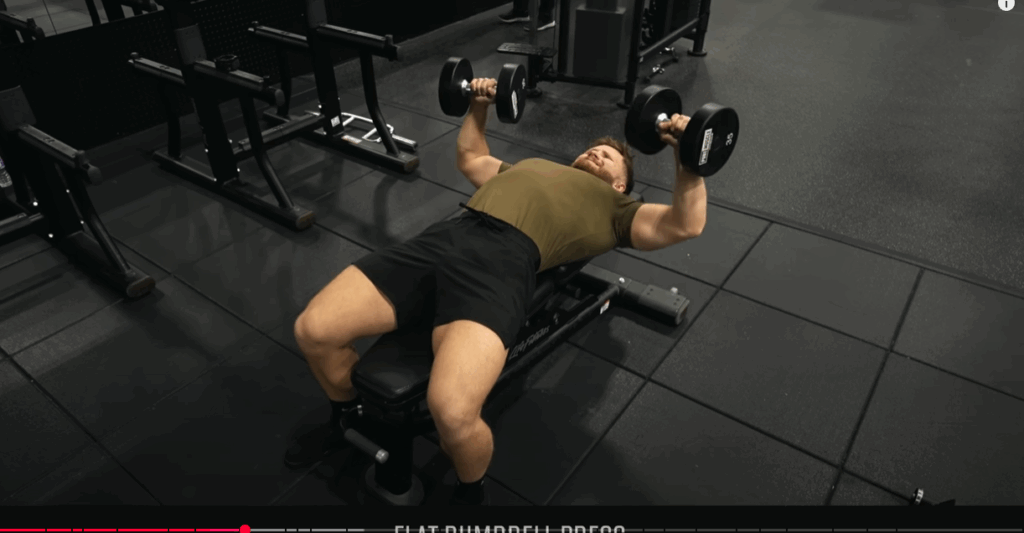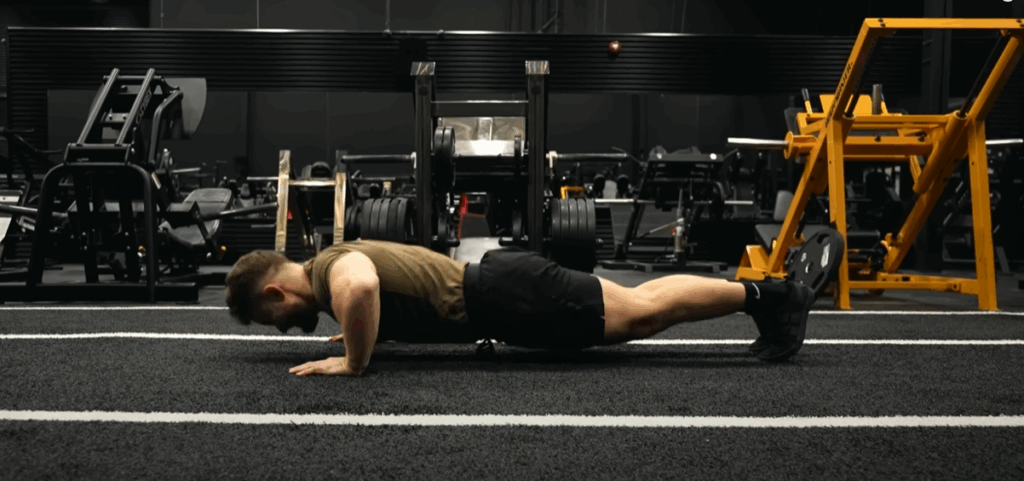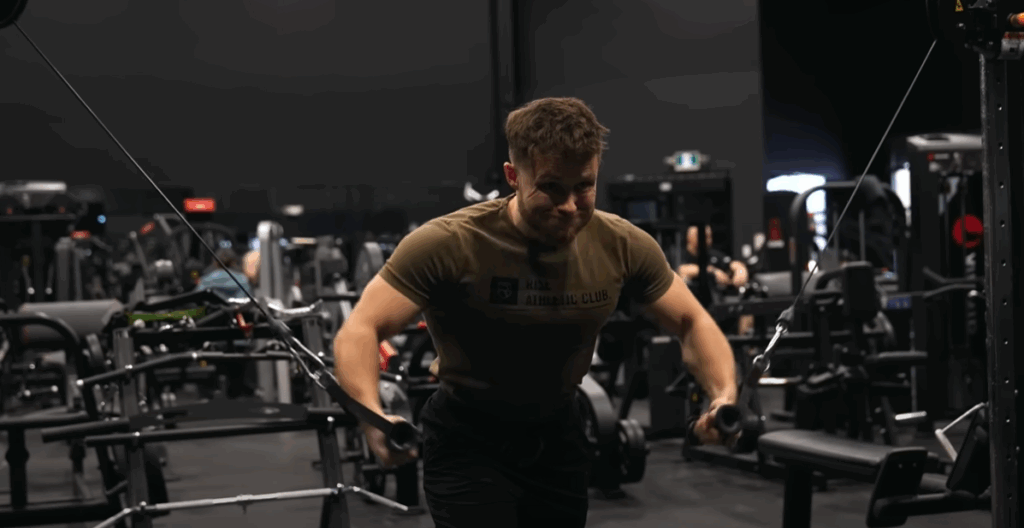When it comes to fitness influencers, few names are as prominent right now as Sam Sulek. With his massive following and even more massive physique, many young lifters are looking to him for guidance. But how effective is his approach to training when held up against the latest in exercise science?
As a coach with over two decades in the industry, I examined hundreds of Sam’s training clips and tracked over 450 of his sets performed so far this year. The goal? To break down what he’s doing right, where things fall short, and what you can learn to improve your own results—whether you’re a beginner or a seasoned gym-goer.

The Numbers Behind the Workouts
Here’s how Sam’s training volume stacks up:
- Chest: 15% of his total sets
- Back: 20%
- Biceps: 16%
- Triceps: A massive 25%
- Quads: Just 11%
This immediately raises an eyebrow. The triceps, which are a relatively small muscle group, received a quarter of his total training attention. Meanwhile, his quads—by far one of the body’s largest muscle groups—got far less focus. In anatomical terms, the quads make up nearly 30% of total muscle mass, while triceps barely hit 4%.
This imbalance reflects a classic flaw in many physique-focused programs: training what’s seen in the mirror more than what truly builds a powerful, athletic body.
Going to Failure: A Double-Edged Sword
One thing is undeniable—Sam trains hard. In fact, over 95% of his sets go to complete muscular failure. If you exclude his forearm work, that number climbs closer to 98%.
Pushing your sets to failure can be effective for stimulating growth, especially for experienced lifters. But when every set is a max effort, recovery becomes an issue. Muscles don’t grow during training—they grow during rest. Overreaching can lead to diminishing returns, fatigue, and injury risk.

A more balanced strategy is using failure strategically—perhaps on the final set of a movement—while stopping one or two reps short on earlier sets. This maintains high intensity without compromising recovery.
Technique: Room for Refinement
Sam is known for his “ego lifting” approach—moving heavy weights with a looser, more aggressive style. While it’s inspiring to watch, it often sacrifices mechanical tension on the targeted muscle.
Two major technical observations stood out:
- Range of Motion (ROM): He frequently cuts reps short, particularly on incline presses and preacher curls. Missing out on the stretch portion of the rep (the most hypertrophy-prone phase) can cost gains over time. For example, in preacher curls, the lower portion activates the biceps the most—yet he often skips it.
- Eccentric Control: While Sam does control many of his negatives, there are plenty of examples where the weight drops too quickly. Slowing down the eccentric portion boosts muscle damage and growth stimulus.
Verdict: While intensity is high, the quality of reps often suffers. Adjusting form slightly—without sacrificing load—could yield better long-term gains.
Lack of Structure: The Intuition Trap
Sam’s sessions appear largely spontaneous. He often decides what to train on the way to the gym and improvises based on feel. This “intuitive training” can work for genetically gifted or enhanced lifters but lacks consistency and measurable progress.
For continued development, especially beyond the beginner phase, structured progression is crucial. Without tracking weights, reps, or even repeating movements consistently, it’s impossible to gauge if you’re progressing.
A simple fix? Track your key compound lifts—such as squats, bench presses, and rows—and monitor weekly changes. Variety is useful, but not at the cost of progression.
The Bro Split Debate
Sam follows a traditional body part split: chest one day, back another, then arms, legs, etc. This old-school approach isn’t inherently wrong, but it creates several issues:
- Imbalanced Volume: Some muscles (like triceps) get excessive work, while others (calves, glutes) are neglected.
- Inefficient Frequency: Most muscles benefit from being trained 2–3 times per week. The bro split typically hits each muscle just once.
For most lifters, a push-pull-legs, upper/lower, or full-body routine is more efficient. These splits allow better volume distribution, more frequent muscle stimulation, and reduce the risk of “junk volume”—excess sets that don’t yield extra growth.

The Good: What Sam Gets Absolutely Right
Despite some flaws, Sam does a few things exceptionally well—and these are worth emulating.
1. Relentless Effort
Sam’s dedication and intensity are off the charts. He’s consistent, focused, and always trains with purpose. Many lifters fail not because their plan is wrong—but because they don’t train hard enough. Here, Sam sets a great example.
Grade: A for Effort
2. Effective Rep Ranges
Analyzing his sets, Sam does the majority of his work in the 4–12 rep range:
- 0–3 reps: 11%
- 4–7 reps: 40%
- 8–12 reps: 40%
- 13+ reps: 9%
This sweet spot targets both strength and hypertrophy. Low reps build power, moderate reps stimulate growth, and high reps build endurance. While I might recommend slightly more high-rep work for muscle variation, his current breakdown is solid for mass building.
Grade: A for Rep Selection
3. Enjoyment and Adherence
Above all, Sam genuinely loves training. He has fun in the gym, experiments with different exercises, and stays consistent. Sustainability is one of the most underrated components of long-term success in fitness. If you don’t enjoy your workouts, you won’t stick with them.
Grade: A+ for Long-Term Consistency
Final Verdict: How Should You Train?
While Sam’s methods may not be ideal for everyone—especially beginners—his intensity and passion are worth emulating. That said, if you’re a natural lifter without enhancement, following his program verbatim could lead to plateaus or burnout.
My recommendation? Combine the best of both worlds:
- Train with intensity, but manage fatigue.
- Track your progress and repeat key movements.
- Use good technique, especially in the stretch and negative.
- Focus on all muscle groups—especially those that aren’t as visible.
- Most importantly, make training something you enjoy, not just endure.
If you’d like a breakdown of Sam’s diet or supplementation strategy next, let me know in the comments—or better yet, subscribe to stay updated. And if you want a smart tool to manage your nutrition like a coach would, check out the MacroAxis app—my go-to for daily tracking.
Stay strong, train smart, and keep enjoying the process.



